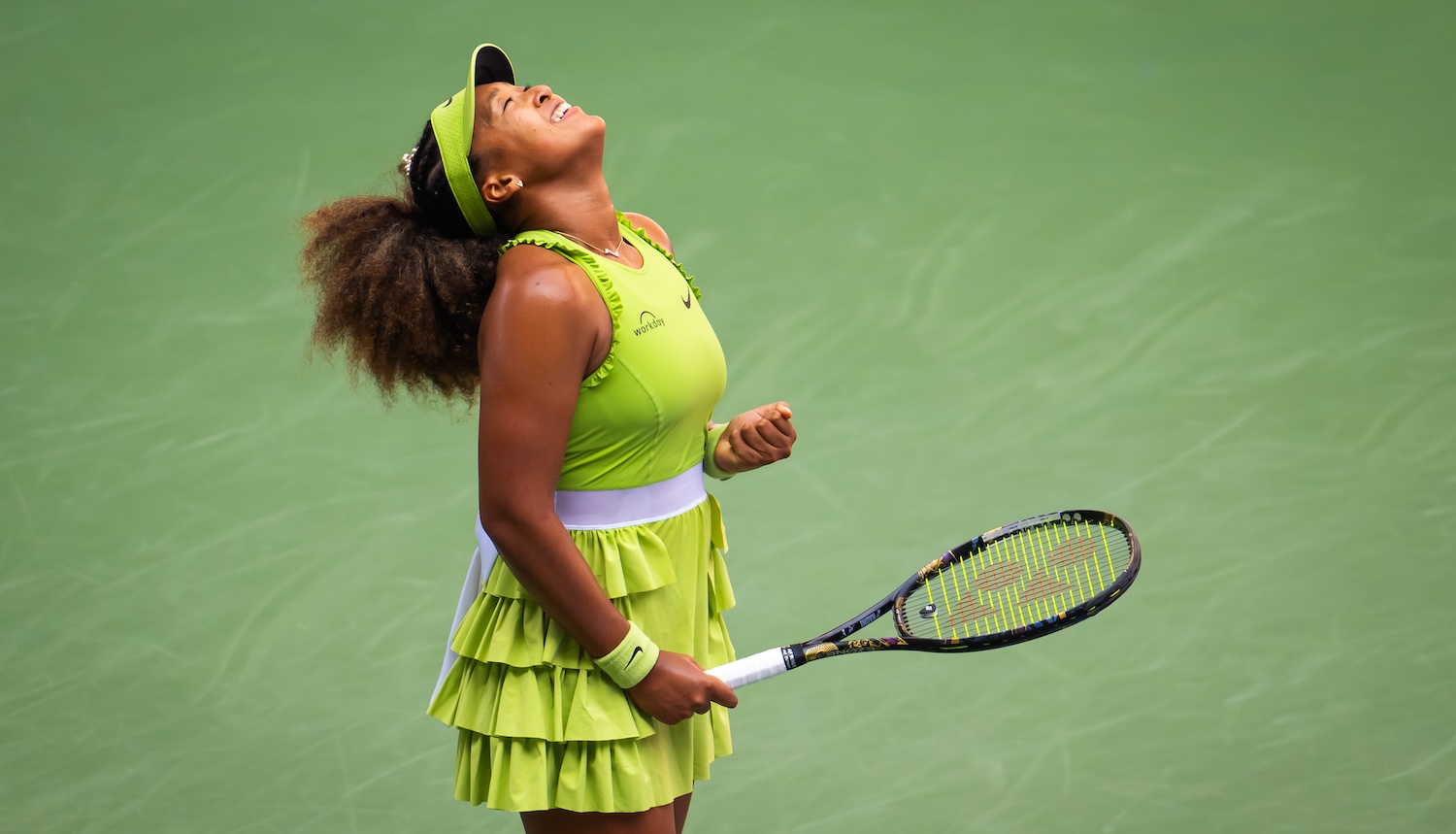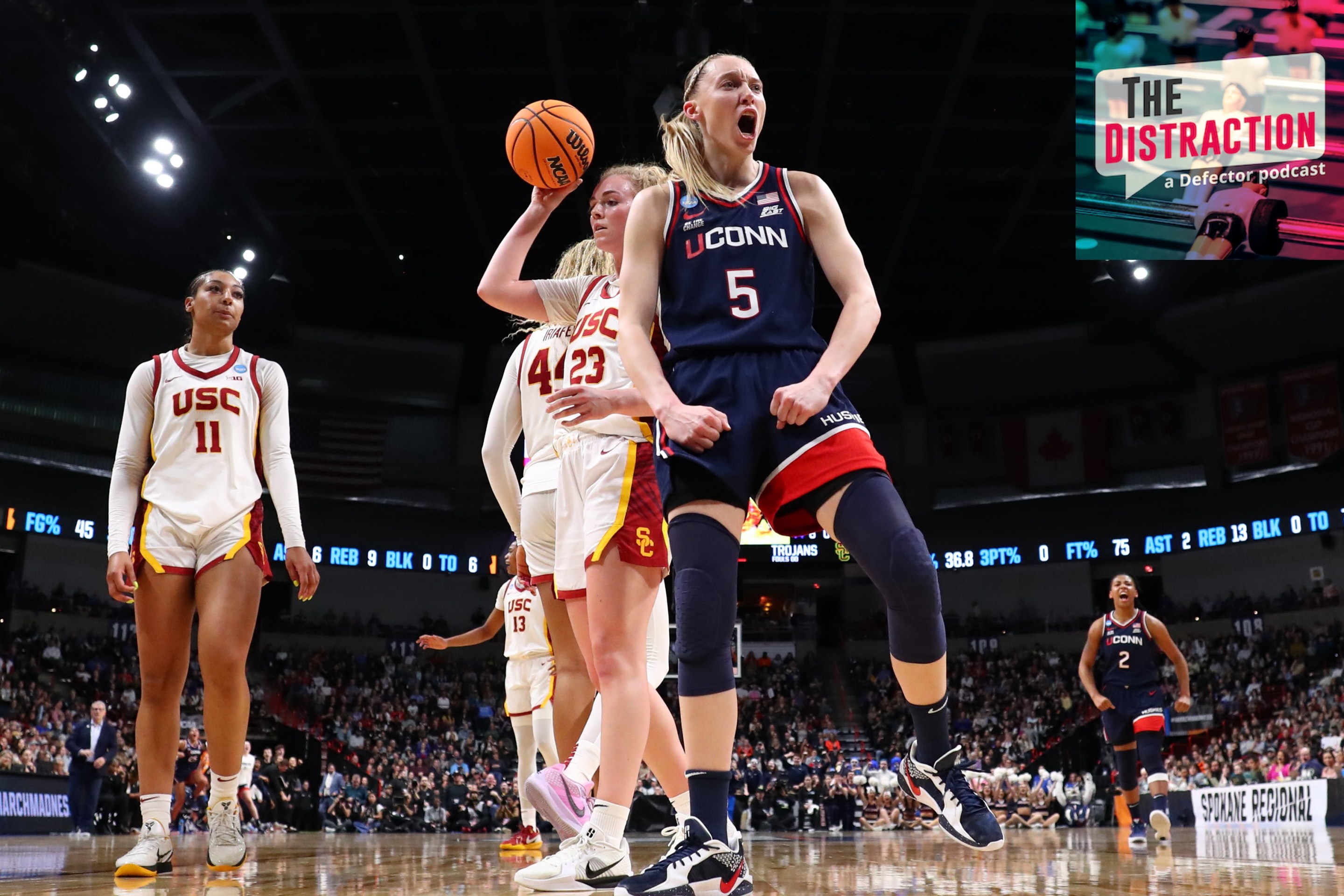The moment the U.S. Open draw was revealed, I sought out Naomi Osaka's name, eager to see who the two-time champion and loser of my second-favorite match of the year would face in the tournament's first round. Her comeback season has been stippled with seemingly equal amounts of tremendous near-misses, encouraging results, and frustrating setbacks, with her highest level only occasionally poking up above the surface, as great as ever. I could not have dreamed up as tantalizing a matchup as she actually had.
Opposite her on Tuesday was Jelena Ostapenko, the Latvian trigger-puller whose defiance of fashion, match, and social norms makes her appointment viewing, even when she's not taking on a four-time Grand Slam champion. Both players hit the tennis ball as if trying to vaporize it, both have had uneven years, and both have higher risk tolerances than most. It promised to be a tennis match for the firearms enthusiasts, more or less. First to 100 unforced errors loses, that sort of thing. Instead, Osaka swept Ostapenko off the court with a dominant 6-3, 6-2 win in just 64 minutes. She made just five unforced errors, all in the second set, as she picked up her first top-10 win since January 2020.
Even Osaka optimists had little recent evidence that this sort of performance was forthcoming. She lost in the final round of qualifying at the Cincinnati Open to Ashlyn Krueger two weeks ago, prompting a heartfelt Instagram post about dealing with possible symptoms of postpartum depression. "I don't feel like I'm in my body," she wrote. It would have made sense for her return to the U.S. Open—not to mention to Louis Armstrong Stadium, one of the biggest stages in tennis—to have been an over-pressurized affair. After all, she attended the 2023 tournament as a fan, and has been building her season around peaking here in New York. Without momentum, under pressure, she stepped onto the court and wiped Ostapenko off it.
The dynamic between the two players was fantastic. With each woman determined to apply pressure on every shot, Ostapenko to a particularly self-destructive degree, rallies spiraled out of control pretty much instantly. Each ball was harder to return than the last, provided either player played the percentages instead of spiking it down the line to even contest what could fairly be called a rally.
Osaka notched 19 winners Tuesday afternoon, though her serving is what struck me. Her game snaps into shape if the serve is landing, and she treated fans to one of her best serving performances of the season. The stats are fantastic: zero double faults, 74 percent of second-serve points won, and only two break points allowed, both defended.
A moment in the second set told the story most cleanly. On her second service game of the set, up a break, Osaka smashed three straight aces, two down the T, and the game-sealer out wide. Ostapenko, ever the opponent of cold Cartesian reality, rolled her eyes at the umpire and complained about the electronic line-calling system's obviously correct calls. She was totally defenseless. Osaka didn't let her into the game, and hardly let her into the match.
When Osaka won, she looked up in clear joy, and quickly broke into tears. “Last year I was watching Coco [Gauff] play, and I so desperately wanted to step out on this court and I didn’t know whether I would be able to mentally or physically," she said on the court after her win. "To win this match and be in this atmosphere means so much to me. I just want to play really well and have a lot of fun. Moments like that are so precious to me and I can only hope I can have even more." I hope so too—not just because the comeback is a good story, but because the top of the women's game can only get even richer with the return of an ass-kicking Osaka.






